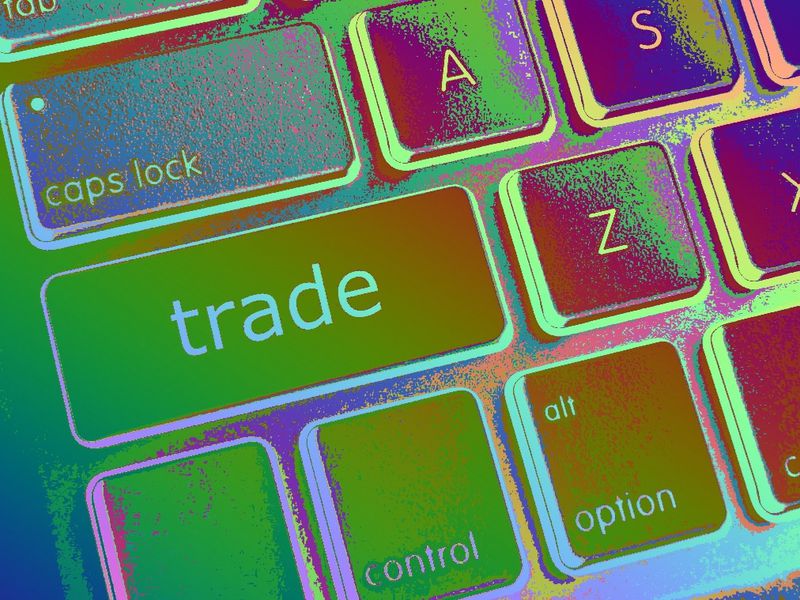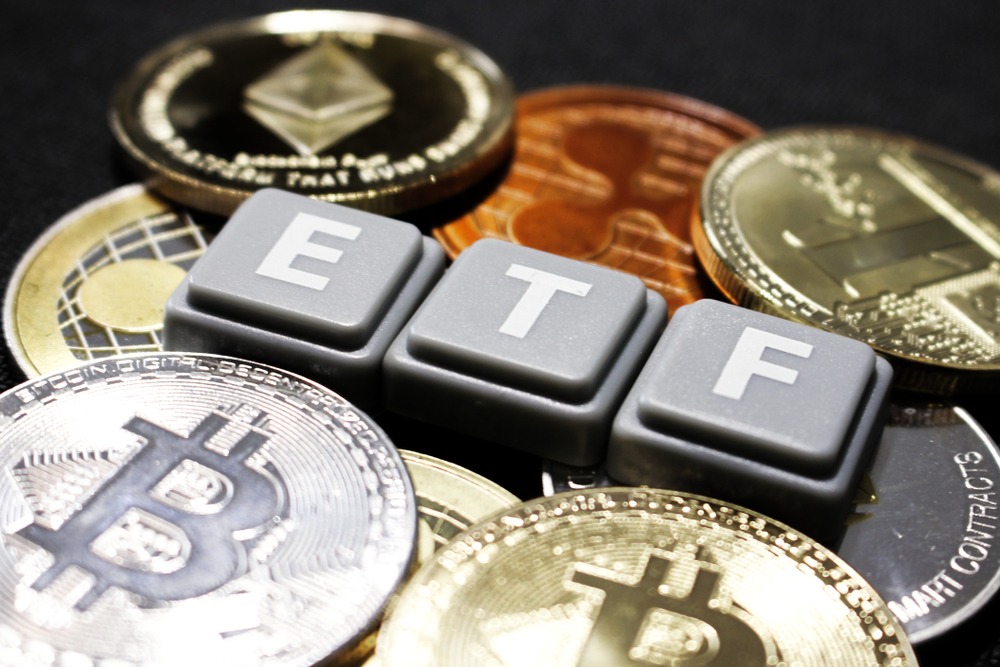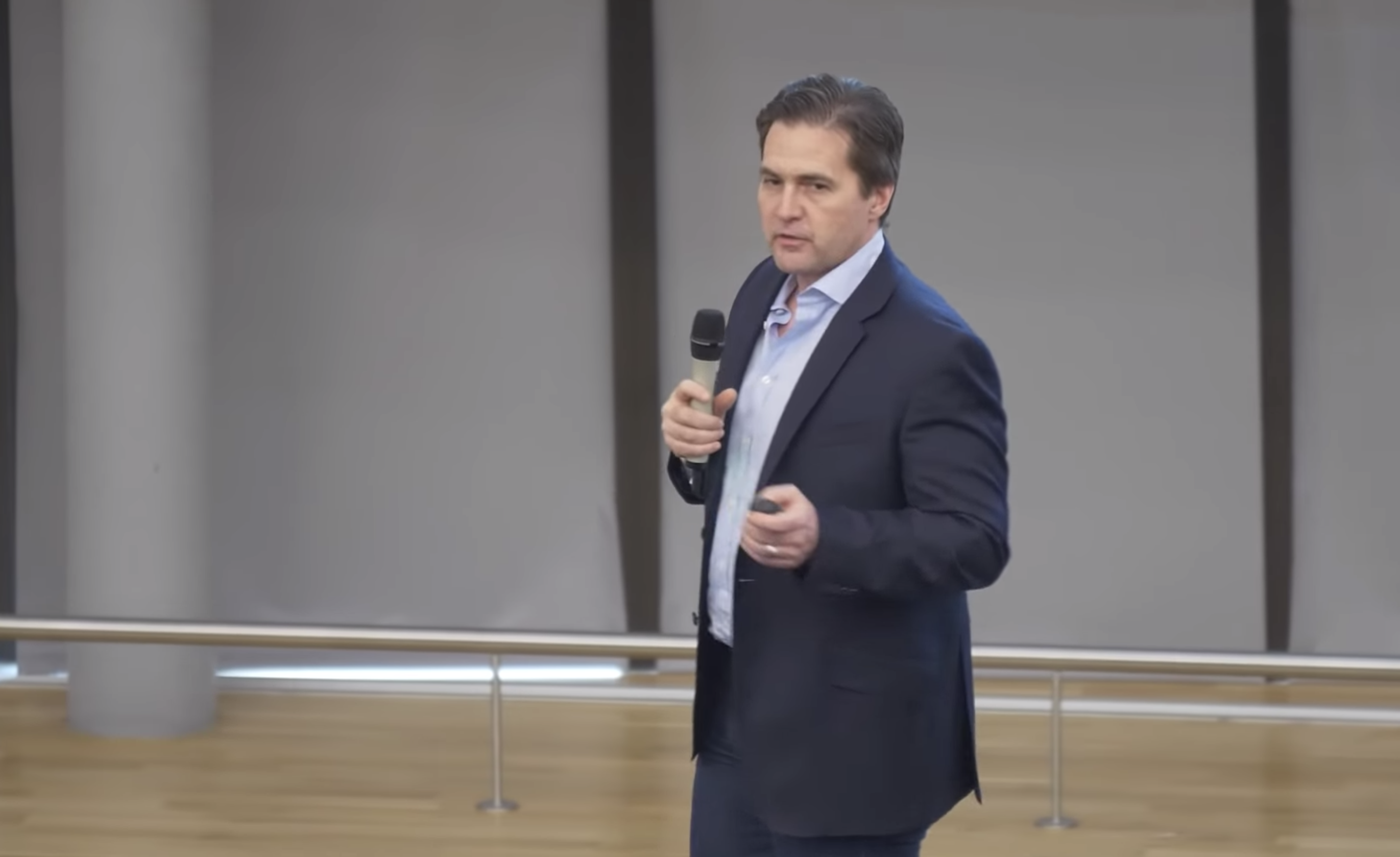The Protocol: Bitcoin Halving in 3 Weeks, Solana’s Yakovenko on Meme Coins
/arc-photo-coindesk/arc2-prod/public/LXF2COBSKBCNHNRE3WTK2BZ7GE.png)
It’s a sign of how fast crypto moves that Ethereum’s landmark Dencun upgrade last week is already fading from the headlines.
Eyes are now turning to Bitcoin’s next quadrennial halving. There’s also plenty of gawking at the meme coin frenzy on Solana. (Who doesn’t like sloths?)
In this week’s issue of The Protocol:
-
Exclusive interview with Solana co-founder Anatoly Yakovenko (on this week’s
The Protocol podcast
) regarding what he thinks of meme coin traders, and why he welcomes the latest episode of congestion as a network stress test.
-
Craig Wright, Polygon, Starbucks, GCR, Dogwifhat, Peter Schiff, Ether.Fi.
-
Top picks from this week’s
Protocol Village
column: Mysten Labs, Sui, Starknet, OP Labs, Stellar, Conio.
-
More than $60M of blockchain project fundraisings.
-
Dencun postscript: Which Ethereum layer-2 network is seeing the cheapest fees?
This article is featured in the latest issue of The Protocol, our weekly newsletter exploring the tech behind crypto, one block at a time. Sign up here to get it in your inbox every Wednesday. Also please check out our weekly The Protocol podcast.
Network news
HALVE TIME: The expected date of the next Bitcoin halving keeps creeping forward – thanks to miners upgrading to faster, more powerful machines and powering up older models, incentivized by this year’s BTC price runup to a new all-time high around $74,000. The halving’s ETA is now somewhere around mid-April, a couple weeks earlier than was expected a few months ago. A similar thing happened four years ago, when prices were also surging, essentially causing the blockchain to speed up. What’s different this time around – and perhaps different from pretty much every prior halving in the network’s 15-year history – is how many projects are now targeting the event for hype-inducing launches and other frenzy-inciting pursuits. Chief among those is the planned launch of Runes, the fungible-token protocol being developed by Casey Rodarmor, whose launch of the Ordinals protocol last year, with its NFT-like inscriptions, caused a sensation on Bitcoin, driving up transactional activity along with fees and congestion. There could also be a scramble to mine block No. 840,000, where the halving is supposed to automatically occur. In the past, mining the all-important halving block brought little more than bragging rights and the chance to embed a message into the blockchain, for posterity. (In 2020, winner F2Pool wrote something about the U.S. Federal Reserve’s Covid-related money-printing.) But now, with the introduction of the Ordinals protocol, it’s possible to actually trade specific serial numbers to the tiniest increments of Bitcoin, known as satoshis or “sats.” And there’s a premium for the especially precious “rare sats” corresponding with milestones like the halving. Already, as reported by CoinDesk’s Daniel Kuhn, people are predicting that block 840,000 could be “the most valuable block to be mined to date.” There’s also the risk that the competition could get so intense that things go horribly awry, resulting in a nasty “reorg.” Pretty crypto, right?
Decentralized exchange Aevo’s founder acknowledged that a recent spike in daily trading volume to over $4.5 billion was partly caused by some users “pumping volumes to $1 billion+ to get more out of our airdrop,” adding that it’s “not happening anymore.”
Polygon Labs paid $4 million to Starbucks in 2022 as part of the latte chain’s soon-to-be-sunsetted NFT-based loyalty program, Odyssey, people familiar with the matter told CoinDesk’s Danny Nelson.
GCR, the crypto trader who became known in 2022 for coordinating successful bets against token prices that later collapsed, reportedly paid $4 million worth of ether (ETH) for the original image that inspired Solana’s runaway hit meme coin dogwifhat (WIF).

Ethereum developers are posting the entire script of the Bee Movie, an animated comedy by comedian Jerry Seinfeld about a bee who sues humans, on the second-largest blockchain – in an apparent demonstration of how cheap fees have become following the network’s landmark Dencun upgrade last week.
Computer scientist Craig Wright, who has long claimed he is the inventor of Bitcoin, is not in fact Satoshi Nakamoto, and didn’t author Bitcoin whitepaper, a U.K. judge ruled in the closely-watched Crypto Open Patent Alliance (COPA) trial. The evidence presented during the month-long trial was “overwhelming,” the judge said.
Poll shows former U.S. President Donald Trump is the favored candidate for the 2024 election among crypto-owning voters.
Protocol Village
Top picks of the past week from our Protocol Village column, highlighting key blockchain tech upgrades and news.
-
Mysten Labs, the company behind the Sui blockchain, claimed a “landmark achievement in scaling blockchain capacity” known as “linear scaling,” according to the team: “During testing and development in a Sui blockchain environment, Pilotfish, a prototype Sui extension, increased throughput by 8x when backed by 8 machines, successfully illustrating the possibility of linear scaling. The latency per transaction decreased as more machines were added, proving the viability of linear horizontal scaling for low latency blockchain transactions for the first time ever on any blockchain.”
-
The developers behind Starknet, the Ethereum layer-2 network whose $2.3 billion STRK token airdrop last month captivated crypto markets, plan to add a design feature known as “parallelization” – one of the factors that reportedly makes rival blockchain Solana popular as a venue for fast, cheap transactions. The feature will go live as part of an upgrade set for the second quarter, allowing Starknet to “process a greater number of transactions simultaneously, resulting in improved throughput and faster L2 finality,” according to a press release distributed by a representative of the developer StarkWare. It is part of the 2024 road map released Wednesday.
-
OP Labs, the main development firm behind the Optimism blockchain, planned Tuesday to begin testing fault proofs on Ethereum’s Sepolia test network. The new deployment comes a few months after Optimism launched an initial version of fault proofs on Goerli, another Ethereum test network, in October. Karl Floersch, co-founder of Optimism and CEO of OP Labs, told CoinDesk he expects the proofs to reach Ethereum’s main network later this year, with the Sepolia deployment bringing the team closer than ever to this goal.
-
The Stellar Development Foundation, the nonprofit supporting development and growth of the Stellar network, announced that the phased rollout of
Soroban
, Stellar’s smart contracts platform, is now complete, enabling anyone to build, deploy and interact with Stellar-based dApps, according to the team. CoinDesk 20 asset: XLM
-
Conio, a financial technology company partly owned by Poste Italiane and Banca Generali, announced the acquisition of a new patent in the U.S., No. 11,915,314, showcasing a cutting-edge multi-signature model for the creation, custody, recovery and management of a digital asset. According to the team: “The solution, designed to be blockchain agnostic compared to the blockchain used and therefore adaptable to different digital assets, involves the generation of three private keys, only two of which are needed to authorize transactions, thus enabling the recovery of the digital asset if one of the three private keys is unavailable.”
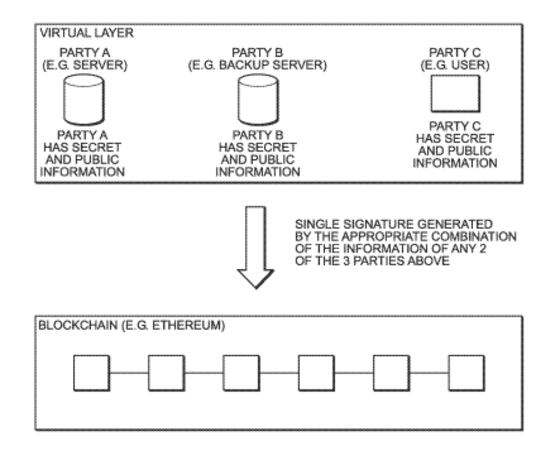
Schematic from Conio’s new patent for a “Method and apparatus for a blockchain-agnostic safe multi-signature digital-asset management.” (Conio/U.S. Patent Office)
Solana Strained by Meme Coin Mania, But Co-Founder Yakovenko Welcomes the Test

The Solana blockchain is in the midst of what some might call a renaissance, its SOL token rebounding almost entirely from all-time-lows in 2020. But recently, it’s the source of activity on the chain that might give some analysts pause: Meme coins built around images of dogs and sloths, general ridiculousness and even the very concept of memes themselves.
The chain, which aims to offer cheaper and quicker transactions than rival networks like Ethereum, has become the go-to platform for meme coins like dogwifhat (WIF), bonk (BONK), and book of meme (BOME) – tokens whose value lies principally (and unabashedly) in their ability to generate internet buzz. A new arrival is SLERF, a sloth-themed token.
Hordes of “degens” – the accepted jargon for crypto traders who are, well, really into it – have flocked to Solana, chasing the trend. Mature observers might call it a display of some of the crypto industry’s worst excesses, morphing the Solana ecosystem into a carnival of scams, schemes and screw-ups.
“To me, it’s just a bizarre thing, I think, of people being terminally online and kind of having nothing better to do,” Solana co-founder Anatoly Yakovenko told CoinDesk this week in an interview for The Protocol podcast.
The meme coin boom has triggered a flurry of activity for the wider Solana ecosystem, with decentralized exchanges on the network surpassing those on Ethereum in terms of overall transaction volume this week. But users are beginning to notice a problem: Many transactions on Solana are failing to go through – highlighting the consequence of meme coin-induced volatility and congestion.
The meme craze has ultimately been a mixed bag for Solana, leading to an influx in usage and liquidity, but dredging up problems with its architecture that have left a sour taste in the mouths of some traders.
Money Center
-
Polyhedra Network
, the Web 3 infrastructure provider behind the zero-knowledge protocol zkBridge, has closed a $20 million fundraising round valuing the company at $1 billion, the firm said in a press release Thursday. The Singapore-based company said the round was led by Polychain Capital, along with participation from Animoca Brands, Emirates Consortium, Mapleblock Capital, Hashkey Capital, UoB Ventures, Symbolic Capital, Longhash Ventures, MH Ventures, Arkstream Capital and Web3Port Foundation.
-
Mantra Chain, a planned network for swapping tokenized real estate and other assets, raised $11 million. Early-stage tech backer Shorooq Partners led MANTRA’s round which also included Three Point Capital, Forte Securities, Virtuzone, Hex Trust and GameFi Ventures, according to a press release.
-
JDI Ventures, a prominent DePIN investment fund under the blockchain hardware manufacturer
JDI Global
, has announced a strategic investment of $10 million in
MXC Foundation
.
-
TEN, an encrypted Ethereum layer-2 network, announced a funding round of $9 million, led by R3, with support from notable investors such as Republic Crypto, KuCoin Labs, Big Brain Capital, DWF Labs and Magnus Capital.
-
London-based Keyring
raised $6 million in venture capital funding
to expand its on-chain compliance platform, which is targeted to institutional investors and protocols, the firm said Tuesday. Gumi Cryptos Capital and Greenfield Capital led the seed investment round, with Motier Ventures, Kima Ventures and others also participating, the company said.

Alex McFarlane and Mélodie Lamarque, co-founders of Keyring Network (Keyring Network)
-
GRVT, a hybrid cryptocurrency centralized exchange (CEX), announced a strategic fundraise of $2.2 million, bringing the total raised to $9.3 million, according to the team. Trading firms and market makers such as QCP Capital, Selini Capital, Antelope, Pulsar Trading and Ampersan contributed to the latest funding round.
-
Berachain’s crypto trade aggregator, Ooga Booga,
raised $2M
.
-
OKX Ventures has invested in Meson Network, a decentralized physical infrastructure network (DePIN), according to the team
-
Umoja, a pioneering smart money protocol, has successfully closed on a $2 million extension to its initial seed funding round.
-
Fuel Labs, a developer of Fuel Network, has partnered with Graviton, an Indian Web3 accelerator, to accelerate its second volume of Indian Web3 startups following a two-month nationwide roadshow.
-
Aptos Labs is partnering with Google Cloud to bring Aptos Gamestack, a unified platform designed to enhance live service game offerings with Web3 capabilities, to the global gaming community.
Fee Impact of Ethereum’s Dencun Upgrade Already Easy to See
Ethereum’s milestone “Dencun” upgrade was the biggest story in blockchain last week; it might be a sign of just how smooth and successful the operation was, from a technical standpoint, that the industry has now moved on to other high-minded pursuits, such as gawking at the memecoin trading on Solana.
But the ramifications of Dencun are still playing out, and the ultimate impact – who are the big winners, and losers – likely won’t be obvious for weeks or even months. One thing that’s already clear is just how massive the fee reductions will be for layer-2 networks that settle transactions on the main Ethereum chain.
Median fees on Arbitrum, the biggest Ethereum layer 2, was around 5.8 cents as of Tuesday, down from about 40 cents just before the upgrade went through. Optimism, a rival layer 2, was seeing fees around 0.7 cents, down from about 50 cents. On the publicly traded crypto exchange Coinbase’s own layer 2, Base, the fees dropped from about 30 cents to about 0.6 cents – hitting the company’s target for “sub-cent” transaction costs.
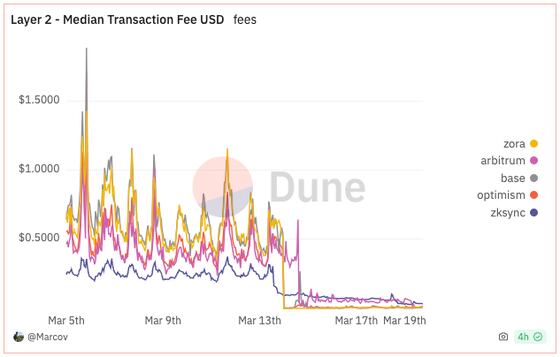
Chart showing drop in cost of median layer-2 network fees before and after last week’s Dencun upgrade. (Dune Analytics)
The blockchain analysis firm Glassnode published a chart, citing data from the website L2fees, that’s a little easier to eyeball:
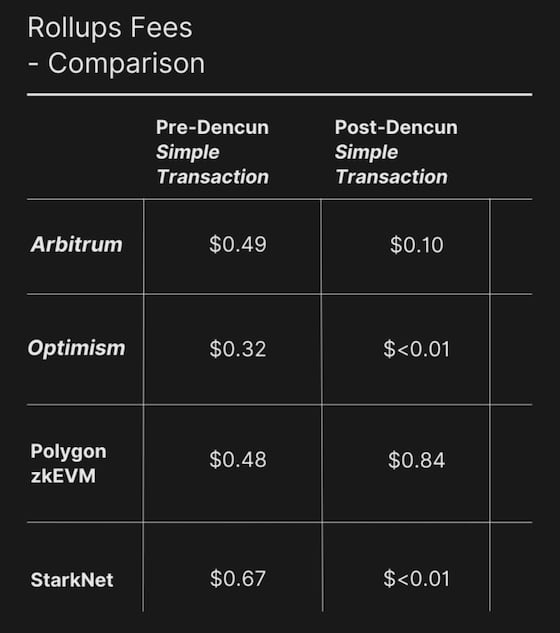
Table of fees for layer-2 chains, before and after Dencun upgrade. (L2fees/Glassnode)
Calendar
-
June 11-13:
Apex
, the XRP Ledger Developer Summit, Amsterdam.
-
July 8-11:
EthCC
, Brussels.
Edited by Bradley Keoun.




